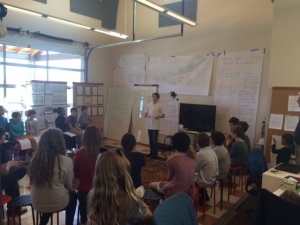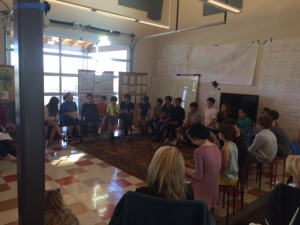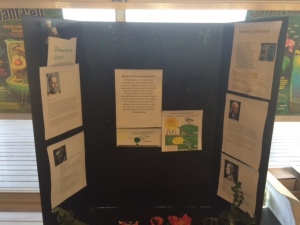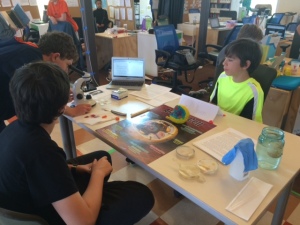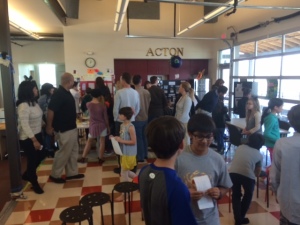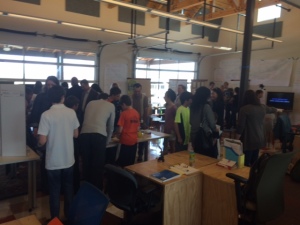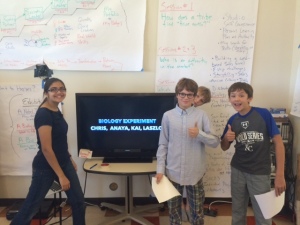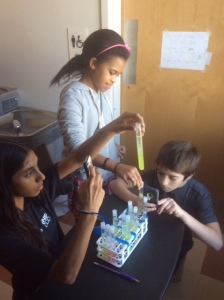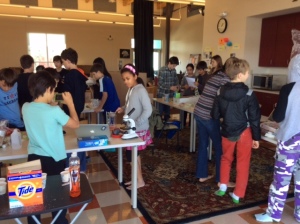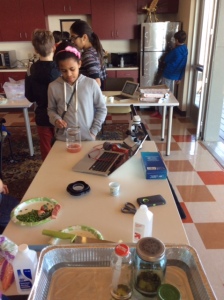Is it possible for a group of high school aged Launchpad Eagles to devour the subject of Biology and design a successful Quest for Middle school Eagles? Frankly, we didn’t know the answer – until now.
On Thursday, parents and friends gathered for the Biology Quest Exhibition, a celebration of all that Middle School Eagles had learned over the past six weeks about Cells, Plants, Animals, Humans and the Biosphere.
During the quest teams competed and collaborated to craft Nobel Prize Winning Speeches in the shoes of their favorite Biology Hero, to master deep Biology Bee questions and to create experiments and displays in a team’s area of focus.
Was the exhibition a success?
After listening to twelve of the Nobel Prize Winning Speeches, a visiting PhD remarked he was impressed at how well the Eagles had memorized the work of Nobel Laurette’s. He was surprised to learn that the Eagles had written all the speeches from scratch.
The Biology Bee was a high pressure affair, with Eagles handling questions like: “What is life?;” “What is the difference between meiosis and mitosis?;” and “Which biology specialty would best fit your calling?”‘
Visitors also were impressed by the hard work and artistic effort that went into the exhibits, experiments and displays.
In the end, the Launchpad Eagles received a cheer and a round of applause for launching the first student designed Quest at Acton Academy.
Next session our Eagles take on the role of Doctor Gregory House from the famous television series, as they prepare to learn about the human body and how to diagnosis diseases.


